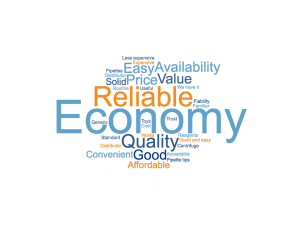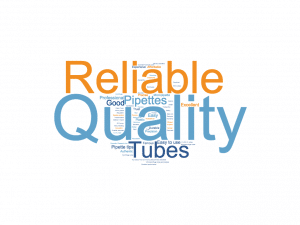The 2017 Market for Plasticware
Sometimes overlooked in a time of great technological advances are the workhorse products upon which every lab depends. Plasticware is one such product and an essential part of every life science laboratory. Items that were once exclusively made of glass including flasks, beakers, test tubes, vials, pipettes, and petri dishes are now more often than not made of plastic. Indeed, some researchers now suggest that the term “in plastico” be added to the life scientist’s lexicon because and increasing amount of analysis and storage but are no longer performed in vitro (the Latin phrase which means “within the glass”). Plastics offer a combination of lightweight, strength, flexibility, safety and convenience that has supplanted glass in many lab applications including cell culture and liquid handling/storage.
Despite the apparently everyday nature of plasticware, the market is complex and competitive. The 2017 Market for Laboratory Plasticware: Cell Culture & Liquid Handling/Storage is the latest report from BioInformatics LLC. Several large suppliers including Corning, Eppendorf, Greiner, Sarstedt, Thermo Fisher Scientific and VWR dominate the market for plasticware. In this highly concentrated market, virtually all leading manufacturers are pursuing some combination of strategies that emphasize product innovation, careful market segmentation, distribution channels and strong branding. Backward integration up the supply chain has also been observed.
All manufacturers seek to differentiate themselves in terms of quality that can generally be defined as autoclavibility, physical strength, heat resistance, reduced leachates and improved transparency. In addition, manufacturers seek to meet the needs of life scientists by offering a variety of product sizes, coatings to support automation, ergonomic improvements and accessibility through multiple distribution channels.
Customers of plasticware remain remarkably brand sensitive despite the best efforts of plasticware manufacturers to establish technological differentiation or to compete on price. This is reflected in the preservation of legacy brand names, fonts and colors, following their acquisition by a competitor. Perhaps this is not surprising. For many scientists, research still carries with it a certain aura of “magic and mystery.” When offered the choice between identical products manufactured under the same conditions, most scientists will choose that which has worked best for them in the past – especially when it comes to plasticware. This level of unflagging loyalty is a direct result of the clarity with which they see the brand. A major challenge facing all plasticware manufacturers, therefore, is to invest heavily in the branding of these commonly used products.
To illustrate the importance of branding in this market, we asked more than 1,000 scientists to tell us the one word that came to mind when thinking about their primary supplier of plasticware. The results are striking… here are the responses for Corning:

Brand Associations for Corning Plasticware
Compare these to the responses for Fisherbrand:

Brand Associations for Fisherbrand Plasticware
Even though Thermo Fisher Scientific has positioned Fisherbrand as an economy or value brand, the company also offers products to appeal to those customers looking for what they consider a “higher end” solution.

Brand Associations for Nunc Plasticware
Some brands are more closely associated with specific types of plasticware rather than the perceived tradeoff between quality and economy. For example, Eppendorf customers than others were more likely to name tubes or pipettes as the first word that came to mind.

Brand Associations for Eppendorf Plasticware
This report is designed to help plasticware manufacturers and distributors understand the size and growth of the market, the relative strength of leading brands, the drivers of brand selection, and what problems would prompt a customer to switch. A detailed description of the contents of this report can be downloaded at our website.





